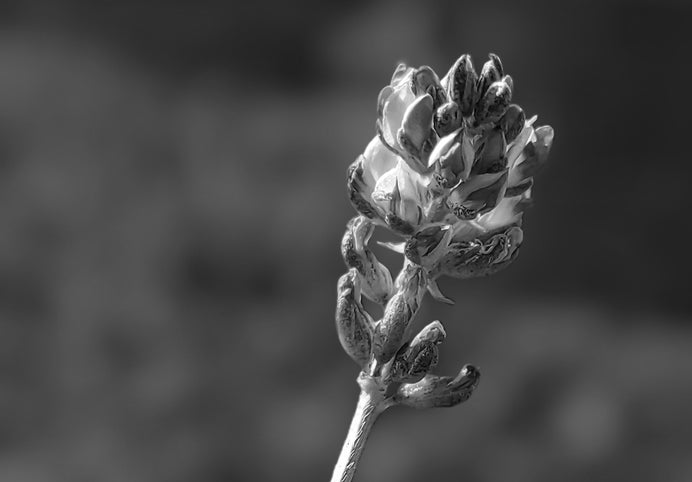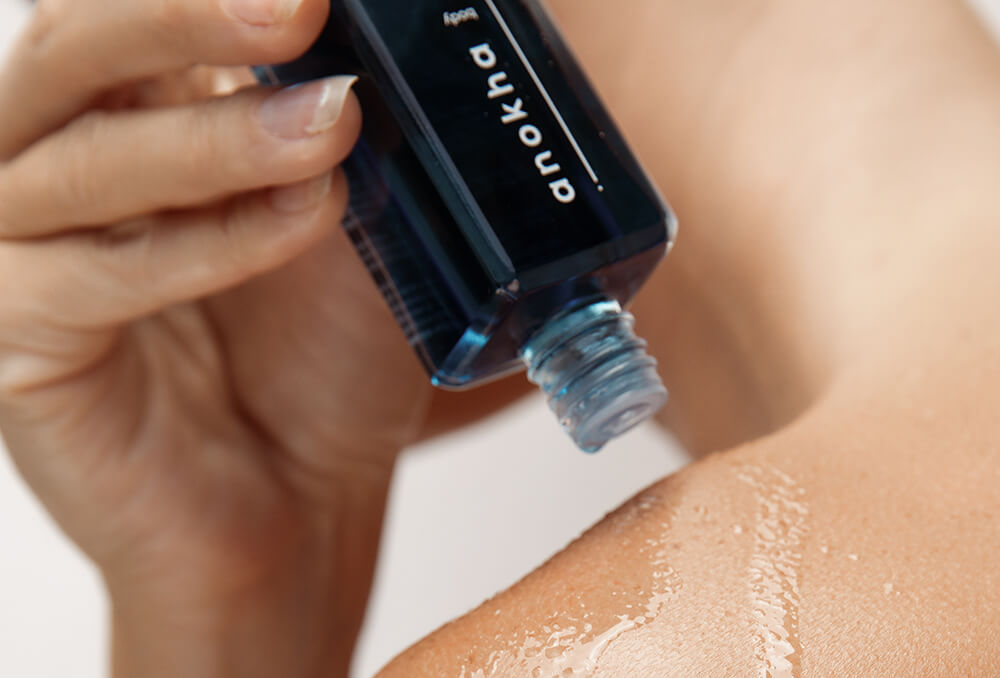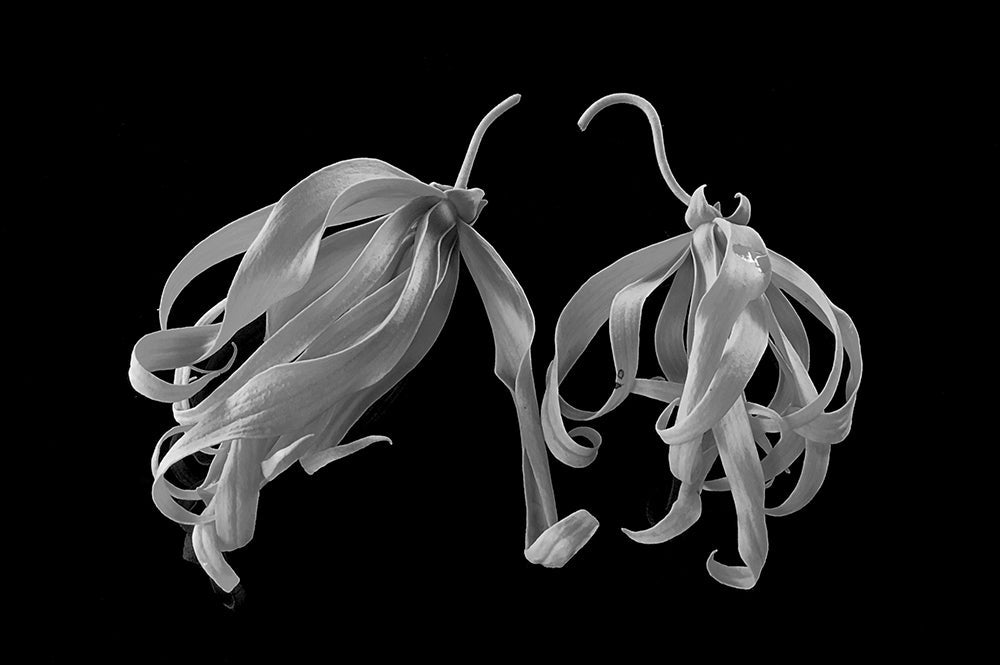
ingredient focus: bakuchiol
the bottom line
Bakuchiol is one of the most exciting natural actives to arrive on the scene. Hailed as one of the trendiest ingredients of 2019 by the marketing intelligence agency Mintel, bakuchiol appeared in 150 new product launches in 2020 alone. Believed to be a retinol alternative in the treatment of fine lines, pigmentation, and acne, this botanical beauty holds tremendous potential for use on sensitive skin. Join us as we dig into the history and science of bakuchiol.
first layer: the history
Bakuchiol was isolated in 1966 from the babchi seed obtained from the plant Psoralea corylifolia, a plant used in traditional Ayurvedic and Chinese medicine. Bakuchiol derives its name from the Sanskrit word for this plant, “bakuchi”. Psoralea coryifolia is found in South Asian countries including Pakistan and India. Requiring 7-8 months to reach maturity, its seeds are harvested between December and March. Babchi seeds have been used topically and internally for various skin conditions, including leukoderma*, psoriasis*, and leprosy*. Bakuchiol has also been isolated from other plants, including Psoralea grandulosa, Psorlea drupaceae, Ulmus davidiana, Otholobium pubescens, Piper longum, and Aerva sangulnolenta Blume.
second layer: the science
In addition to its long history, bakuchiol also possesses one of our favorite things in the world – data. When discussing why bakuchiol is such a promising ingredient, we first have to review the gold standard in anti-aging skincare, retinol.
Retinoic acid and its derivatives, including retinol, act at the level of the epidermis through regulation of specific genes. They have been found to be clinically effective against wrinkles and numerous skin conditions, including psoriasis*, acne, and hyperpigmentation. However, their use is limited by the high incidence of side effects including irritation, dryness, peeling, redness, and burning – which makes them off-limits for those with sensitive skin. Although bakuchiol does not resemble retinoids at a structural level, there is marked similarity between the ingredients in terms of their effects on anti-aging genes and proteins. Bakuchiol has been shown to stimulate key anti-aging genes, including retinoid-binding and metabolizing genes, extracellular matrix* genes, and dermo-epidermal junction* genes.
Collagens* secreted by fibroblasts* in the dermis are major components of the skin’s extracellular matrix (type I and type III collagen) and basement membrane* (type IV collagen). Bakuchiol has also been demonstrated to upregulate types I and IV collagen, and to stimulate type III collagen. It has notable collagenase* and elastase* inhibitory activity, too, which indicates that it is able to stop the enzymes that break down the collagen and elastin* found in our dermis.
Bakuchiol has additionally been found to have antiproliferative, anti-inflammatory, antioxidant*, and anti-acne activity. Bakuchiol decreases pigment by means of its antioxidant effects as well as its ability to disrupt melanin* synthesis by blocking both alpha-melanocyte stimulating hormone activation and tyrosinase*, which is the rate-limiting step in melanin synthesis. The anti-acne effect is regulated by bakuchiol’s ability to down-regulate the formation of 5-alpha-reductase, an enzyme that converts testosterone to dihydrotestosterone (DHT) with a subsequent increase in excess oil production. Bakuchiol also exhibits activity against organisms implicated in acne, including Propionibacterium acnes, Staphylococcus aureus, and Candida, which is a especially important given the increasing drug resistance of organisms implicated in acne.
Finally, bakuchiol improves hydration by up-regulating the synthesis of hyaluronic acid*, which helps to improve hydration of the skin. This relatively unknown botanical is literally a powerhouse of activity.
third layer: the skin
Bakuchiol is the ideal anti-aging, pigmentation reducing, and anti-acne ingredient for use on sensitive skin.
A key study by Dhaliwal et al in 2019 evaluated the effects of bakuchiol vs retinol in a double-blinded, prospective study - neither the study administrators nor the recipients knew which cream they were receiving until after the trial had ended. They evaluated 44 volunteers who randomly received creams with either 0.5% of retinol or 0.5% of bakuchiol. Both ingredients significantly reduced fine wrinkles by the 12-week time point, without differences between the two ingredients. Pigmentation was also assessed and at 12 weeks: 59% of the bakuchiol group noted improvement in their hyperpigmentation, while 44% of the retinol had improvements. The most significant difference between the two groups was found in the degree of adverse effects, in that there was significantly more scaling and stinging in the retinol group. Both ingredients produced some degree of redness, itching, and burning, although this was more notable in the retinol group.
Another study by Chaudhuri et al evaluated 16 volunteers who received a lotion containing 0.5% of bakuchiol. After 12 weeks, there were statistically significant reductions in wrinkle depth and skin roughness. Improvements in elasticity, skin firmness, and skin tone were also noted. While results were apparent at 4 weeks, they were more remarkable at 8 weeks and 12 weeks, suggesting a cumulative effect with continued use.
Finally, Chaudhuri et al studied the use of bakuchiol in acne-affected skin by performing a pilot study in the treatment of acne patients with 1% bakuchiol, 2% salicylic acid, or 1% bakuchiol with 2% salicylic acid. The best results were seen in the combined bakuchiol-salicylic acid group, who showed a 70% decrease in acne lesions and inflammation after six weeks of twice daily use. Bakuchiol-only patients had a reduction of 57%, followed by salicylic acid patients who experienced a 48% decrease. None of the patients experienced adverse effects with any of these products.
fourth layer: how we do it
Our bakuchiol & pomegranate facial oil incorporates bakuchiol at 1% into our formula, along with key actives including bisabolol and coenzyme Q10 to enhance dermal penetration while reducing the formation of fine lines and wrinkles. We’ve also used a base consisting of cucumber, rosehip seed, and cranberry oils to help brighten skin and improve skin texture. Sea buckthorn seed, pomegranate, and kukui nut oils round out the mix with support of the skin barrier and collagen.
All this and more at www.anokhaskincare.com .
xx
anokha
references:
- bakuchiol.net
- Chaudhuri RK, Bojanowski K. Bakuchiol: a retinol-like functional compound revealed by gene expression profiling and clinically proven to have anti-aging effects. Int J Cos Sci 2014; 36: 221-230.
- Dhaliwal S, Rybak I, Ellis SR et al. Prospective, randomized, double-blind assessment of topical bakuchiol and retinol for facial photoageing. Br J Dermatol 2019; 180: 289-296.
- Backhouse CN, Delporte CL, Negrete RE et al. Active constituents isolated from Psoralea glandulosa with anti-inflammatory and anti-pyretic activities. J Ethnopharmacol 2001; 78: 27-31 .
- Ohno O, Watabe T, Nakamura K et al. Inhibitory effects of bakuchiol, bavchin, and isobavachalcone isolated from Piper longum on melanin production in B16 mouse melanoma cells. Biosci Biotechnol Biochem 2010; 74: 1504-1506.
- Kim JE, Kim JH, Lee Y et al. Bakuchiol suppresses proliferation of skin cancer cells by directly targeting Hck, Blk, and p38 MAP kinase. Oncotarget 2016; 7: 14616-14627.
- Ferrandiz ML, Gil B, Sanz MJ et al. Effect of bakuchiol on leukocyte functions and some inflammatory responses in mice. J Pharm Pharmacol 1996; 48: 975–980.
- Pae HO, Cho H, Oh GS et al. Bakuchiol from Psoralea corylifolia inhibits the expression of inducible nitric oxide synthase gene via the inactivation of nuclear transcription factor-jB in RAW 264.7 macrophages. Int Immunopharmacol 2001; 1:1849–1855.
- Matsuda H, Kiyohara S, Sugimoto S et al. Bioactive constituents from Chinese natural medicines. XXXIII. Inhibitors from the seeds of Psoralea corylifolia on production of nitric oxide in lipopolysaccharide-activated macrophages. Bio Pharm Bull 2009; 32:147–149.
- Shoji M, Arakaki Y, Esumi T et al. Bakuchiol is a phenolic isoprenoid with novel enantiomer-selective anti-influenza A virus activity involving Nrf2 activation. J Biol Chem 2015; 290: 28001–28017.
- Polakova K, Fauger A, Sayag M, Jourdan E. A dermocosmetic containing bakuchiol, Ginkgo biloba extract and mannitol improves the efficacy of adapalene in patients with acne vulgaris: result from a controlled randomized trial. Clin Cosmet Investig Dermatol 2015; 8: 187–191.
- Chaudhuri RK, Marchio F. Bakuchiol in the management of acne-affected skin. Cosmet Toilet 2011; 126: 502-510.
- wikipedia.org
*definitions:
antioxidant: an antioxidant is a compound that inhibits oxidation. free radicals create oxidative stress and an inflammatory response which in turn can damage DNA and result in injury to the epidermal and dermal layers of the skin. in the skin, this manifests as premature aging with decreased elasticity leading to increased wrinkling, age spots, and decreased skin tone. antioxidants stabilize free radicals, which in turn limits their ability to damage the body.
basement membrane: also known as the basal lamina, the basement membrane is a thin but dense layer of the extracellular matrix that lines most human tissues to form the support for epithelial tissue.
collagen: a fibrous protein that forms part of the dermal matrix, connective tissue, cartilage, and bone
collagenase: an enzyme that breaks the peptide bonds in collagen
dermo-epidermal junction: the junction between the epidermis and dermis provides adherence between the epidermis and dermis, mechanical support to the epidermis, and serves as a barrier to the exchange of cells and large molecules across the junction.
elastase: a class of enzymes that cleaves peptides in elastin, among many other proteins
elastin: elastin is a protein that forms the main component of elastic fibers in the skin. it provides stretch, recoil, and elasticity.
extracellular matrix: a three-dimensional network of macromolecules and minerals outside of the cells, including collagen, enzymes, proteins, and hydroxyapatite. the ECM provides structural and biochemical support to surrounding cells.
fibroblast: a fibroblast is a cell that contributes to the formation of connective tissue within the body. fibroblasts secrete collagen proteins which help to maintain the structural framework of the tissues.
hyaluronic acid: hyaluronic acid plays an important role in the human body and is involved in hydration and joint lubrication. its synthesis increases during tissue injury and wound healing, and it regulates specific aspects of tissue repair.
leprosy: also known as Hansen's disease, leprosy is an infection caused by the bacteria Mycobacterium leprae. it can affect the nerves, skin, eyes, and nasal mucosa, but can be cured with early diagnosis and treatment.
leukoderma: a localized area of white depigmented skin due to total loss of epidermal melanin.
melanin: melanin is a dark brown to black pigment occurring in the hair, skin, and iris of the eye. it's responsible for tanning of skin.
psoriasis: psoriasis is a skin disease characterized by a rash with itchy and scaly patches, typically found on the knees, elbows, trunk, and scalp.
tyrosinase: tyrosinase is an enzyme which is the rate-limiting step for controlling the production of melanin.
faq's:
what is bakuchiol?
bakuchiol is a natural retinol alternative derived from the babchi plant.
what are some bakuchiol benefits?
bakuchiol is the ideal anti-aging, pigmentation reducing, and anti-acne ingredient for use on sensitive skin.
how does bakuchiol vs retinol compare?
there are lots of differences - we've written a whole blog on this topic, so please feel free to check it out here.
what is phytoretinol?
phytoretinol is a plant-based alternative to traditional retinol with similar anti-aging benefits including the reduction of fine lines and improved skin texture. they are gentler and have fewer side effects like redness and dryness. it's derived from natural sources. bakuchiol is one example of a phytoretinol.




leave us a comment
This site is protected by hCaptcha and the hCaptcha Privacy Policy and Terms of Service apply.